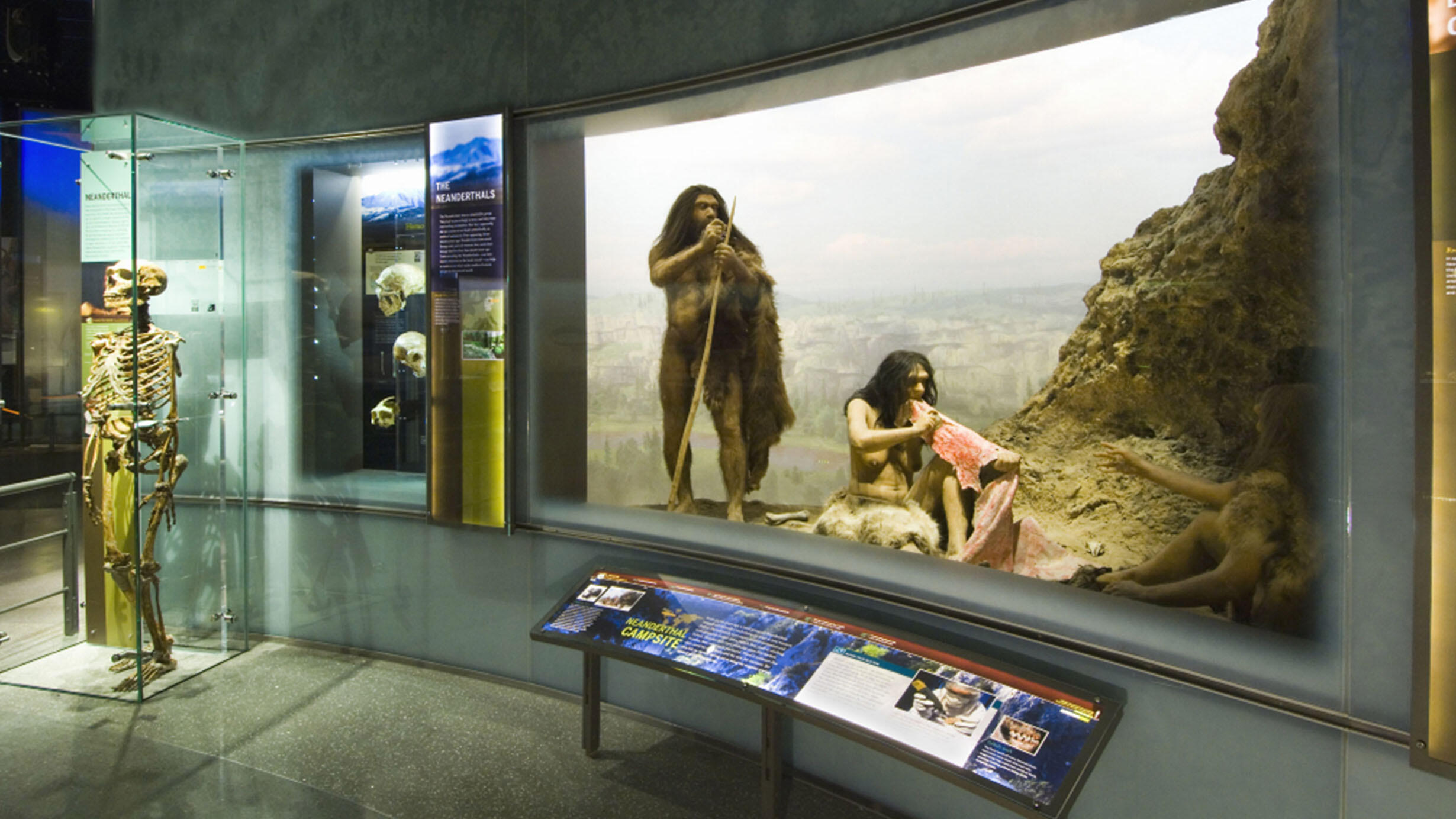 The Neanderthals were a remarkable group, with brains as large as those of modern humans, and outstanding toolmakers. But they apparently did not create art or think symbolically, as modern humans do.
The Neanderthals were a remarkable group, with brains as large as those of modern humans, and outstanding toolmakers. But they apparently did not create art or think symbolically, as modern humans do.D. Finnin/© AMNH
For the first time, scientists have identified the “creativity genes” that set apart modern humans from chimpanzees and Neanderthals, which could help explain how modern humans overcame now-extinct hominids like the Neanderthals.
“One of the most fundamental questions about human nature is what sparked the explosive emergence of creativity in modern humans in the period just before and after their widespread dispersal from Africa and the related extinction of Neanderthals and other human relatives,” said Ian Tattersall, curator emeritus in the Museum’s Division of Anthropology and co-author of a new study published today in Molecular Psychiatry. “Major controversies persist about the basis for human creativity in art and science, as well as about potential differences in cognition, language, and personality that distinguish modern humans from extinct hominids.”
Modern humans demonstrate remarkable creativity compared to their closest living relatives, the great apes, a group that includes chimpanzees, gorillas, and orangutans and their immediate ancestors. Humans have innovativeness, flexibility, depth of planning, and related cognitive abilities for symbolism and self-awareness that also enable spontaneous generation of narrative art and language.
But the genetic basis for the emergence of creativity in modern humans has remained a mystery. “This new study is the result of a truly pathbreaking use of genomic methodologies to enlighten us about the mechanisms underpinning our uniqueness,” said Tattersall.
The research team, led by Robert Cloninger, a psychiatrist and geneticist at Washington University in St. Louis, previously identified 972 genes that regulate gene expression for human personality, which is comprised of three nearly separate networks for learning and memory.
One, for regulating emotional reactivity—emotional drives, habit learning, social attachment, conflict resolution—emerged in monkeys and apes about 40 million years ago. The second, which regulates intentional self-control—self-directedness and cooperation for mutual benefit—emerged a little less than 2 million years ago. A third one, for creative self-awareness, emerged about 100,000 years ago.
In the new study, researchers discovered that 267 genes from this larger group are found only in modern humans and not in chimpanzees or Neanderthals. These uniquely human genes code for the self-awareness brain network and also regulate processes that allow Homo sapiens to be creative in narrative art and science, to be more prosocial, and to live longer lives through greater resistance to aging, injury, and illness than the hominids they replaced.
Genes regulating emotional reactivity were nearly the same in humans, Neanderthals, and chimps. And Neanderthals were about midway between chimps and Homo sapiens in their genes for self-control and self-awareness.
“We found that the adaptability and well-being of Neanderthals was about 60 to 70 percent of that of Homo sapiens, which means that the difference in fitness between them was large,” Cloninger said. “After the more creative, sociable, and physically resilient Homo sapiens migrated out of Africa between 65,000 and 55,000 years ago, they displaced Neanderthals and other hominids, who all became extinct soon after 40,000 years ago.”
The researchers determined that the genes unique to modern humans were selected because of advantages tied to greater creativity, prosocial behavior, and healthy longevity. Living longer, healthier lives and being more prosocial and altruistic allowed Homo sapiens to support their children, grandchildren, and others in their communities throughout their lives in changing and sometimes harsh conditions. And being more innovative than other hominids allowed humans to adapt more flexibly to unpredictable climatic fluctuations.
“In the bigger picture, this study helps us understand how we can effectively respond to the challenges that modern humans currently face,” Tattersall said. “Our behavior is not fixed or determined by our genes. Indeed, human creativity, prosociality, and healthy longevity emerged in the context of the need to adjust rapidly to harsh and diverse conditions and to communicate in large social groups.”